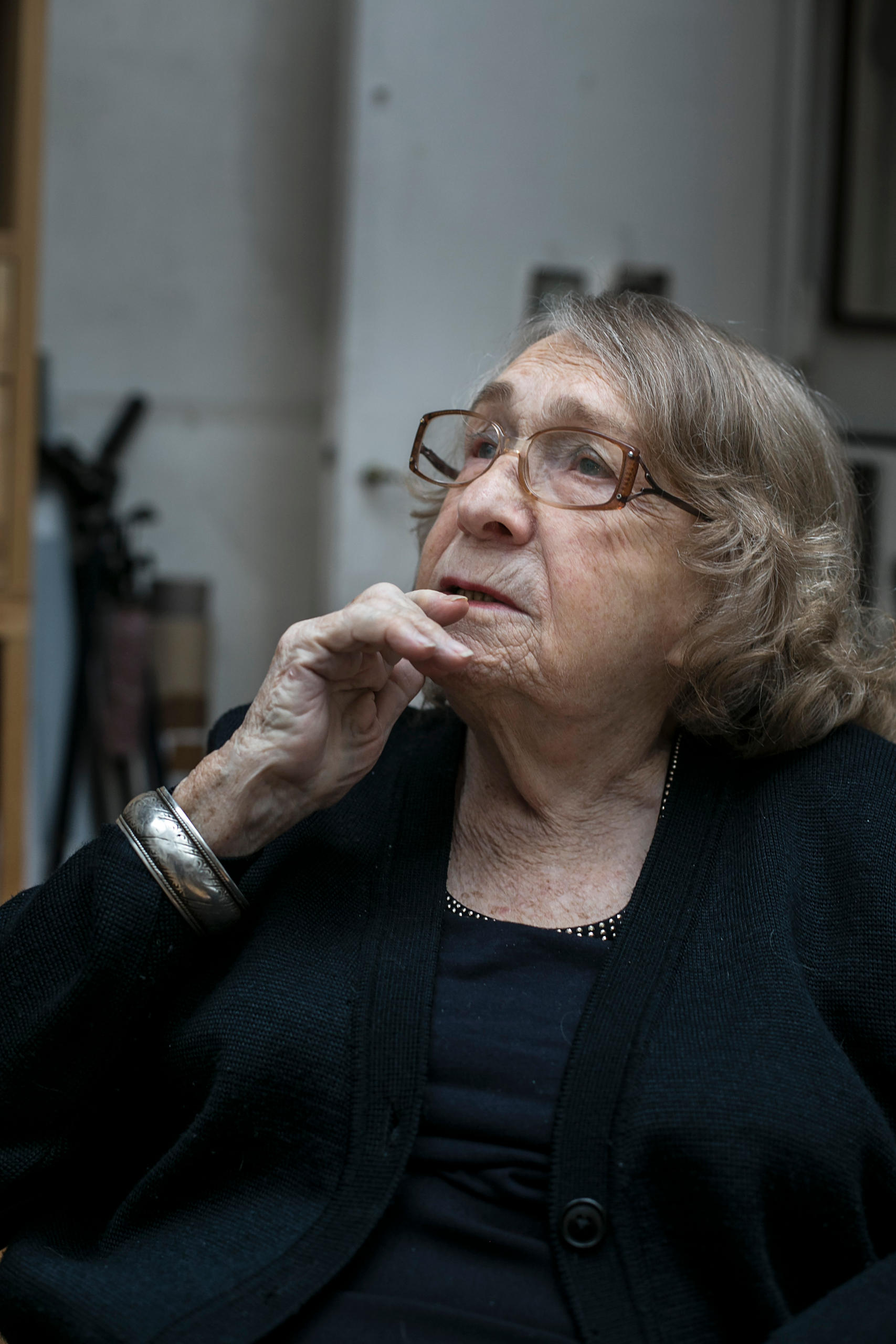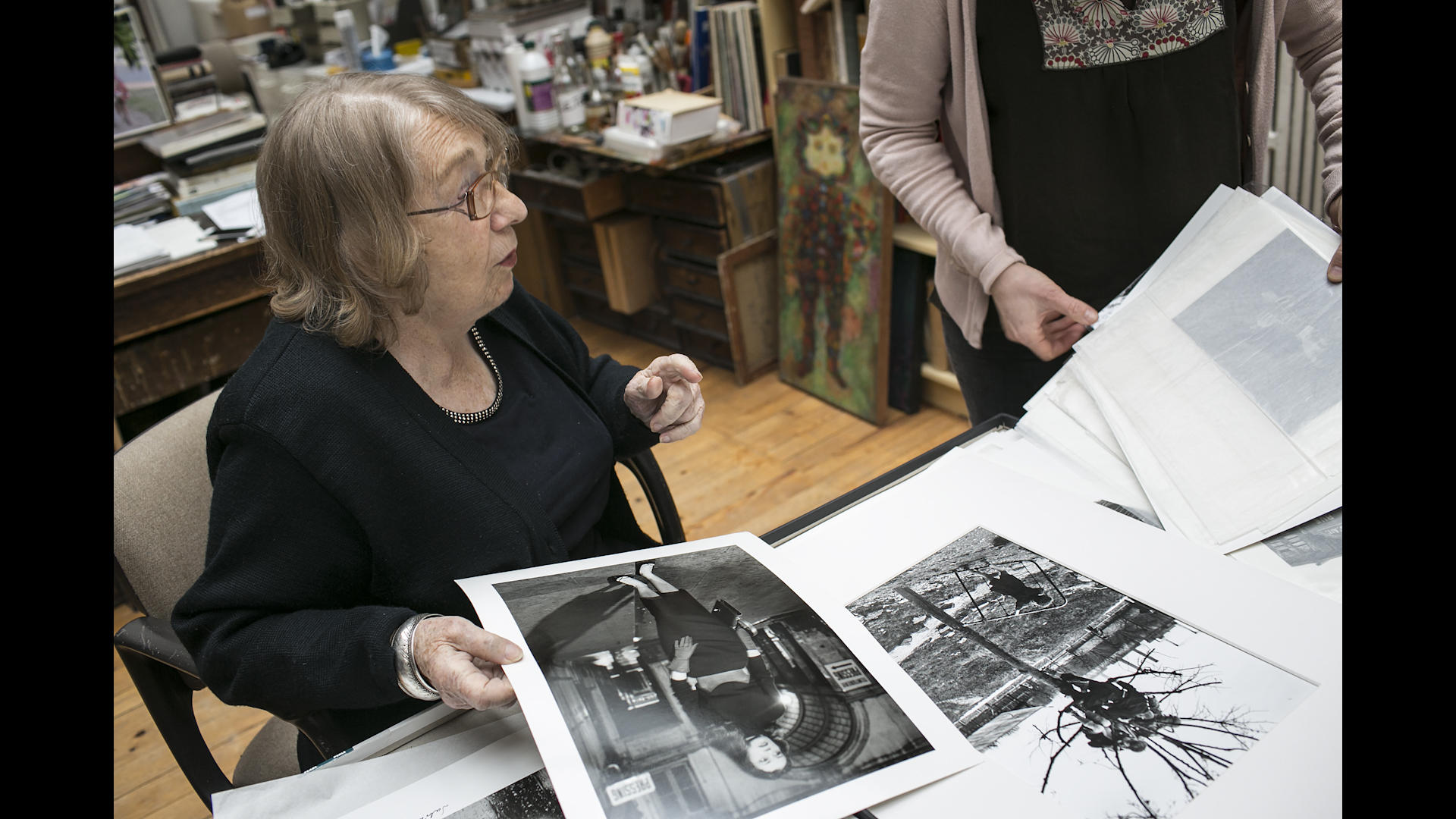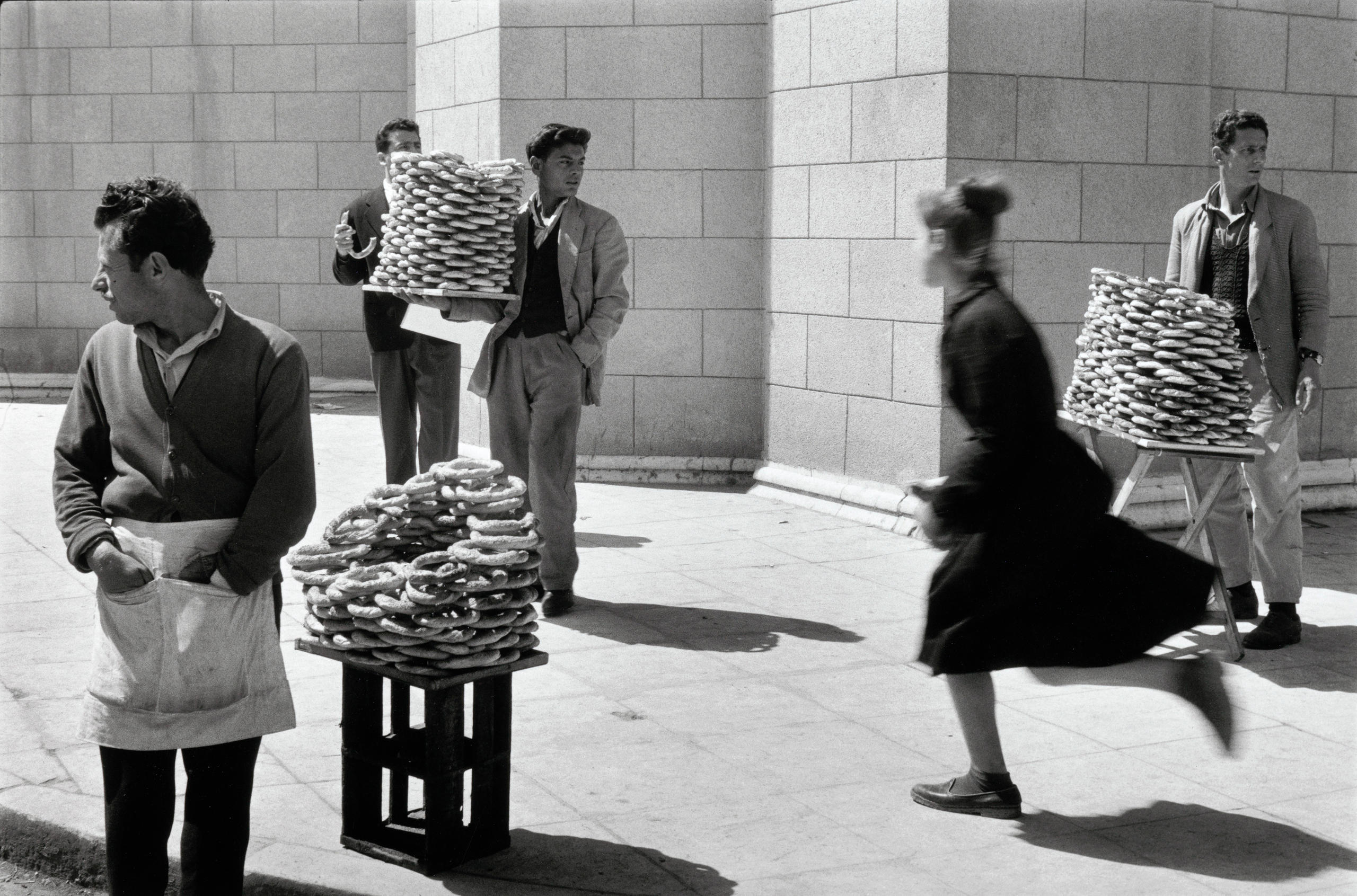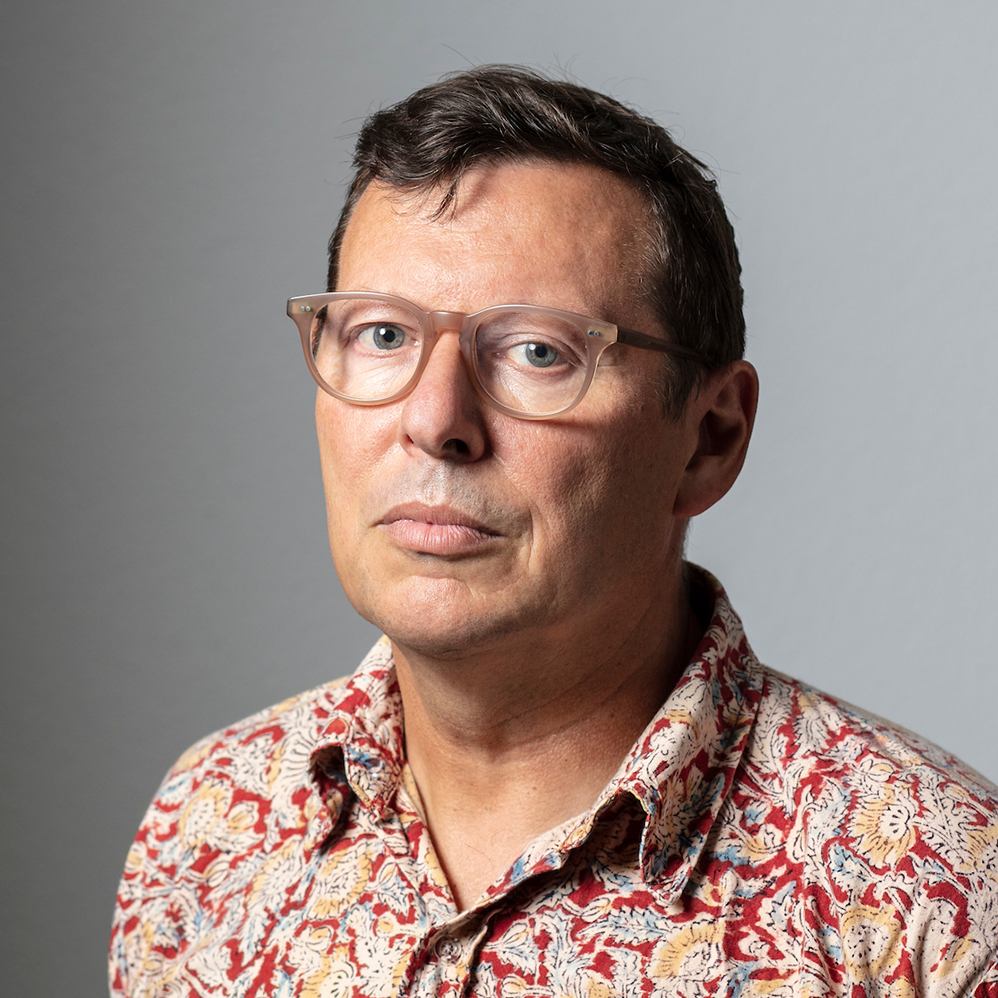
Sabine Weiss: Photography is not an art but a craft

She used light to convey emotions through photography, rather than to put herself on centre stage. What mattered to Sabine Weiss was the work itself, not exhibiting it.
Now, at 92, the last representative of the humanist school has agreed to open up with a retrospective exhibition that is currently showing in Switzerland, her country of origin.
Artist, feminist, humanist photographer, Weiss does not care for labels: “I don’t like being put in a box, as I’ve done so many different things.” What makes successful photography? “It should be simple, and it should move you.”
And that’s just how she has lived her extraordinary life: in simplicity. With her sensitive eye, she turned ordinary scenes into timeless images. She photographed street children and famous people with the same frankness, always capturing the nobility of the moment.
At her advanced age, the time has come for her to bear witness. Nestled in a rear courtyard in a chic Paris neighbourhood, her apartment, which has also been her studio for 46 years, tells the tale of nearly six decades of photography. “In the early days I improvised a dark room, but I could only work at night, as there was too much light otherwise,” she recalls.
The Swiss photographer, a naturalised French citizen, lives surrounded by her archives. They have seeped into almost every room, the living room, the office, the studio, but they are meticulously filed. “The good thing about Sabine is you can find everything,” says her assistant, Laure Augustins. Preserving objects has become a way of life for her. She has turned her memories into the many different collections that decorate her home: sardine tins, metal ex-votos, old combs and small wicker baskets. “I save things from destruction,” she explains.

More
A life behind the lens
“I am not an artist”
Among the many objects, paintings and African masks adorning her walls, there is not a single photo she took herself. “Even this picture of my grandchildren is not one of mine, a beach photographer took it,” she confides, pointing to a black and white photo of a little girl and a little boy.
They are two of the three children of her daughter Marion, who is visiting her mother today, and offers to help her make up for the photo shoot. “I can still put a bit of make-up on myself,” retorts Weiss archly. Despite her age and a planned knee operation, she is determined to manage her own affairs, which she does with brio, aided by her assistant.
The photographer is also determined to remain in the shadows. Exhibitions are not her cup of tea, not just other photographers’ but also her own. “I had very beautiful ones in the United States, but I didn’t go to them.” It was not she the artist but her husband, the American painter Hugh Weiss, who died in 2007. “He needed to exhibit.” She, meanwhile, was a “photographer craftswoman”, who lived photography not as an art but a craft with its technical difficulties, now simplified by digital technology.
Accordingly, Weiss waited until her 92nd birthday before agreeing to the retrospective exhibition of her work, which is now showing at the Bellpark museum in Kriens (canton of Lucerne).
A woman in a men’s world
Born in 1924 in Saint-Gingolph (canton Valais), a village on the border between Switzerland and France, she grew up in the Geneva countryside. Her father was a chemical engineer. “So I knew the different products, and I was interested in the laboratory side of photography,” she recalls.
After leaving the family home at 16 to work as an au pair, she started an apprenticeship at a well-known photographer’s studio in Geneva. With her father’s backing, she chose her own path at a time when few women were mistresses of their destiny. “I was very independent, but I was not a rebel either. My father always let me do as I thought best. I did not have to fight for this freedom, I had it.”
So there was no fight, no feminist struggle, but a career that seemed to flow naturally. In fact, being a woman was often to her advantage. Certainly, “it never held me back. They were all men in the offices, so they were happy to see a woman,” she says with a laugh. But she didn’t let herself be walked over, for instance when, in a horde of photographers, someone shouted out “Move over, Madame, and let the photographers get on with their job!” She knew how to stand her ground: “I wasn’t stuck-up. Nor was I a fighter. I was just normal.”

More
Sabine Weiss bears witness for the first time
Fleeing an impossible love
“Rigour and simplicity,” the Calvinist values of her Geneva youth, have remained a driving force throughout her adult life. Indeed, it was to flee a complex situation that she left Geneva, although she had already opened her own studio. “At 18, I had intractable love problems. Leaving was the only solution,” she explains.
In 1946, post-war Paris welcomed her with open arms. “People were happy. Shops were reopening, as were delightful little bistros. We had no money but we ate out all the time, we didn’t give a jot.”
Soon after arriving, she was hired as an assistant to Willy Maywald. In her spare time, she would roam the markets and take photographs of shop windows. “Sometimes we would do swaps. I would give the butcher a photo in return for a steak,” she reminisces.
Then came a series of happy encounters, including one with the famous photographer Robert Doisneau, who was immediately captivated by her work. Thanks to his support, she landed a contract with Vogue magazine, and then joined the agency Rapho. That’s how she became a representative of the current of French Humanist photography, a label she accepts, even if she finds it simplistic.
“The man of my life”
In the city of love, the photographer also became reconciled with her feelings. “I met a man and I said to myself, ‘He’s the man of my life!’” And in 1950 she married Hugh Weiss, although more for practical reasons than for the sacraments of marriage: “I was about to go on a reporting trip to Egypt when he told me: ‘We’re going to get married, so I can get you back if you get into trouble.’” For the ceremony, she wore a little black dress: “When I told my granddaughter this she was shocked, but for me the wedding was not important. We just had a great love, 58 years of happiness!”
As it happened, she did have problems in Egypt. “I was deported for espionage,” she says with an impish grin. From her trips to the four corners of the earth, she has brought back a wealth of stories. Few subjects have escaped the photographer’s lens: advertising, fashion, the rich and famous, street people. “I even photographed corpses at the morgue. Sometimes it was the only photo left to remember them by. Some things were funny, and others very sad.”
Today, she has put her tools away. “I can no longer hold a camera with both arms as I have a broken shoulder, and with one arm I move too much.”

In compliance with the JTI standards
More: SWI swissinfo.ch certified by the Journalism Trust Initiative
































You can find an overview of ongoing debates with our journalists here . Please join us!
If you want to start a conversation about a topic raised in this article or want to report factual errors, email us at english@swissinfo.ch.